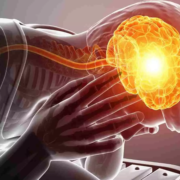Combining RSV and Flu Vaccines Found Safe and Effective, may Potentially Ease Vaccine Burden: Study

UK: A Phase III randomized trial demonstrated that administering the RSV prefusion F protein vaccine (Arexvy) simultaneously with the adjuvanted seasonal quadrivalent influenza vaccine elicited a robust immune response and was safe for older adults. The findings were published online in Clinical Infectious Diseases on August 05, 2024.
Respiratory syncytial virus
(RSV) is the major cause of acute respiratory illness. Senior citizens,
infants, and individuals with medical conditions such as lung disease, heart
disease, and diabetes are at major risk of developing RSV. It infects the lungs and respiratory tract. In adults and older,
healthy children, respiratory syncytial virus (RSV) symptoms are mild and
typically mimic the common cold. Self-care measures are usually all that’s
needed to relieve any discomfort. Considering this, Rebecca Clark, from Layton
Medical Centre, Blackpool, United Kingdom, et.al conducted a study to evaluate
the co-administration of adjuvanted seasonal quadrivalent influenza vaccine and
respiratory syncytial virus prefusion F protein-based vaccine in ≥65-year-olds.
For this purpose, the
research team conducted a randomized, open-label trial involving 37 centers
from Belgium, Finland, France, Spain, and the United Kingdom. Declaration of
Helsinki from 14 October 2022 to 17 July 2023. Good Clinical Practice and
Regulatory Requirements conducted the study. The protocol of the study was
approved by the relevant ethics committees.
The study included 1045
participants and the per-protocol sets included 471 Co-Ad and 400 Control
participants for the post-vaccination flu analysis and 471 Co-Ad and 374
Control participants for the post-vaccination RSV analysis. Adults with aged ≥65
years and those with chronic stable medical conditions were included in the
study, Individuals with suspected or confirmed immunosuppressive or immunodeficient
conditions resulting from disease or therapy, and individuals who had received
an influenza vaccine within 6 months before FLU-
aQIV
were administered in the study. Individuals who received the individuals who
received RSV vaccine were excluded from the study.
The findings revealed that:
- In terms of HI titers for the A/Victoria
(H1N1), B/Victoria, and B/Yamagata influenza strains as well as RSV-A
neutralization titers, non-inferiority of FLU-aQIV and RSVPreF3 OA
co-administered with sequential administration was shown, but not for A/Darwin
(H3N2) HI titers (95%). - Using a microneutralization test, the immune
response to A/Darwin(H3N2) was further evaluated post-hoc. The post-vaccination
adjusted GMT ratio (Control/Co-Ad) was 1.23 (95%) indicating that the
immunological response to A/Darwin(H3N2) was sufficient after
co-administration. - 95% of the groups’ RSV-B neutralization titers
were similar. - The majority of solicited adverse events were
mild to moderate and temporary, but the rates of serious and unsolicited
adverse events were similar across groups.
“The adjuvanted RSV prefusion
F protein-based vaccine (RSVPreF3 OA, Arexvy, GSK) is effective against
RSV-related lower respiratory tract disease, demonstrates strong
immunogenicity, and has an acceptable safety profile for adults aged 60 and
older”, researchers concluded.
Reference
S., Labrador, J., Loubet, P., Natalini Martínez, S., Moza Moríñigo, H.,
Nicolas, J.-F., Pérez Vera, M., Rämet, M., Rebollo-Rodrigo, M. H., Sanz-Muñoz,
I., Dezutter, N., Germain, S., David, M.-P., Jayadev, A., Amare Hailemariam,
H., Kotb, S., & Meyer, N. (2024). Safety and immunogenicity of respiratory
syncytial virus prefusion F protein vaccine when co-administered with
adjuvanted seasonal quadrivalent influenza vaccine in older adults: A phase 3
randomized trial. Clinical Infectious Diseases. https://doi.org/10.1093/cid/ciae365
Powered by WPeMatico











